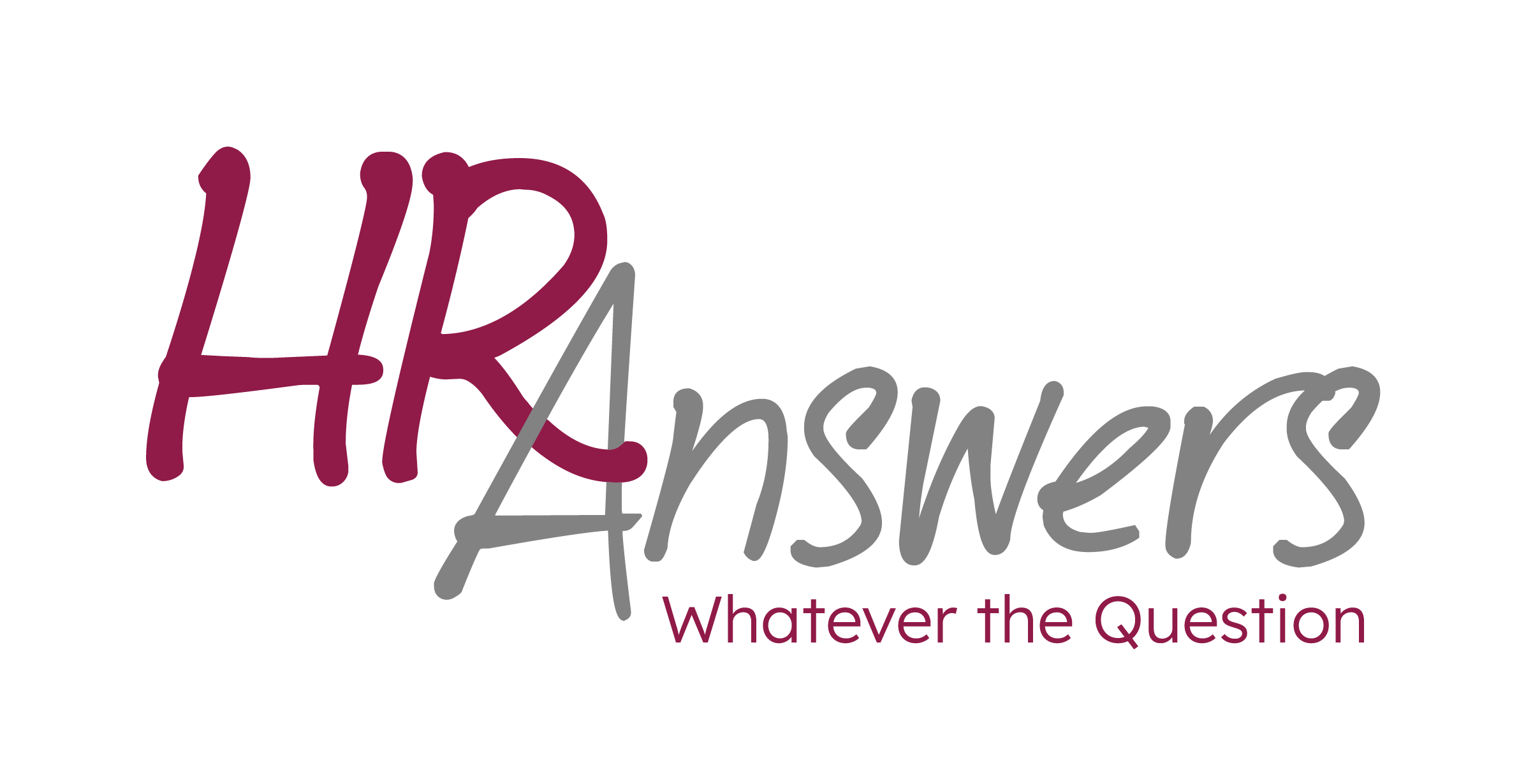HR Must Be Involved in Layoff Planning

Sadly, there has been an increase in discussions (and headlines) about employers experiencing or exploring layoffs in their organizations (some industries more so than others). Employees are a key component of our operations. They should be the last thing we cut and not an emotional reaction to our financials. More of a proactive mindset and less of a reactionary one.
If you find yourself near these conversations, please consider:
- Putting promotions and raises on hold (hiring freezes)
- Reducing hours – Perhaps move some to part-time status, perhaps four-day work weeks
- Exploring – Furloughs, Job Sharing and Early Retirements
- Cutting– Processes, non-essential costs, tech tools that do not help with daily tasks, cut subscriptions to low ROI vendors
- Revaluating your benefits
- Eliminating contingent workers and contract labor
Of course, it will be important to consider all the costs and benefits to each of these options, for short- and long-term solutions, before ever putting filled positions on a list.
However, if you are experiencing great difficulty and you believe you will have to say goodbye to employees, then we want to be able to supply some information and support to the process.
HR must work with their counsel to minimize the legal risks of any planned reduction in force. Attorneys tell employers that cases filed regarding layoffs are hard to win. Unfortunately, the plaintiffs often are the “nicer, older” former employees who can easily sway a jury’s sympathy.
Employers should be purposeful in their vocabulary, long before an attorney is involved. Some definitions of terms may be helpful. First, Layoff must be defined as the intent to bring the employee back to work once business is back. There is no severance pay in layoffs. If you do not intend to bring employees back within six months, then do not call it a layoff. Discharge is a general term most aptly defined as released from one’s duties. Termination is best described as separation from employment due to performance challenges that the employee has not been able to correct, or for violation of organizational policies. Separation is the most general term, and one to use when telling employees that you are separating them from the organization due to the changing economy and the lack of new business, orders, demand, finances, etc., and that there is little likelihood of returning anyone to work.
The key to minimizing an organization’s liability, and avoiding being before a jury, is planning. A timeline and realistic expectations are needed. One suggestion is to have the organization consider several division-wide reductions in force (RIFs), rather than a company-wide RIF. Having this be a series of separate activities can reduce the possibility of a company-wide class action.
The important first step in any type of separation scenario is the decision-making process. This must be thoroughly documented and must include the business case for the decision. It is the role of the employer to document how the outcomes of reduction corelate to the business case of need. It is equally important that individuals are identified through an objective and accepted process of evaluating seniority, performance, skill, or a combination of these three.
Because the identification criteria leads to the impacted employees named it is crucial to make the criteria easy for everyone to understand.
Impermissible criteria for selection include:
- Protected class
- Proximity to retirement
- Outstanding claims
- Health status
- Leave status
- Protected conduct (e.g., whistle-blowing)
Typically, an organization will have this criterion outlined in their separation policies and data will be maintained to support the identification process. If this is not the case for your organization, do not choose criteria that requires the development of “just in time (created from memory)” information for review. In these cases using seniority is the safest criteria. An adverse-impact analysis is an essential part of the process and should be conducted under the attorney-client privilege. Employers will want to make sure that, as the workforce has and is changing, the statistics do as well. In addition, employers will want to double check their compliance with WARN (Worker Adjustment and Retraining Notification Act), and any of the state- specific laws as well.
Employers need to be particularly careful about how they communicate the separation and layoff to employees. We do not recommend simply sending out a memo, having corporate security at the ready, or having employees read an announcement online. Employers need to have HR, including benefits representatives, on-site for consultation during a time of separation or layoffs. It is good practice to prepare an email summarizing the relevant points and supporting recommendations for the separation/layoffs. Any efforts to find departing workers other work should be documented as well. Outplacement assistance isn’t just a nice thing to do; individuals who have jobs or good prospects for getting a new job tend not to sue employers as often. HR’s involvement will help ensure consistency and fairness. This additional documentation will help lay the groundwork for HR as a witness, should there be a need for a trial.
To aid you in the process of knowing what steps to take and how to communicate with your employees during these troubling times, you certainly can give our consultants a call.
THE LAYOFF CONVERSATION: Reducing the Stress and Discomfort
One of the trickiest situations that managers and supervisors face is the layoff or termination conversation. It is a responsibility that causes stress, complex emotions, and discomfort. It is a conversation intensely disliked by anyone who has to do it. Many times, managers or supervisors have even reported physical effects, such as indigestion, sleeplessness, and even dizziness, just before, during, and after such meetings. HR must be the teacher and coach as supervisors perform this onerous duty.
While it’s unrealistic to think that all the stress and discomfort of going through a layoff conversation can be eliminated, there are steps that can be taken to reduce those effects. These steps benefit everyone, so they are well worth the effort. It’s critical to remember that while the conversation is difficult, it is the employee who is facing the trauma and uncertainty of losing their job. It makes sense to take whatever measures you can to make it easier for everyone.
Before going through a reduction in the workforce, consider taking the following steps in preparation for the actual layoff conversations:
Consider the communication:
- Pick the timing. Many organizations will announce layoffs early in the day and never on Fridays, so that employees have time to process the impact, then ask questions. Doing this earlier in the day gives the employee an opportunity to think about how they will share this information with family members. It also gives the employee an opportunity to file for unemployment before the end of the week, which speeds up their uncompensated time.
- Identify how the message is initially delivered. If several jobs are being eliminated at once, what is the most effective way for communication to be made? It might mean a group message followed by individual meetings. Consider any part of the individual meetings that you hope to keep confidential until you go through the process.
Pick the format, then use it.
- Be personal. Even when several jobs are being eliminated at once, it is important to individually meet with the affected employees if possible, and as soon as possible. Each person’s situation is different, so meeting one-on-one is responsive to each employee. Promptly having the meetings can ensure that rumors are better managed.
- Be focused and brief. Establish a script that you can follow and refer to as you go through the discussion. This not only helps cover the essential points but allows you to stay focused and ease the emotional effects.
- Be responsive, but in control. Allow individuals to ask questions, then answer those questions when you are ready. If you need to get back to them on something, do so as soon as you can. Don’t make a follow-up promise you cannot keep. Follow-up and follow through.
Script out your key points. There are several key points that need to be addressed:
- Reminder to ensure you use the correct terminology. A “layoff” implies the individual can expect an opportunity to be recalled at some future time. If that expectation does not exist, clarify that the employment is ending. We prefer the word “separation,” since it is not as emotionally charged as “termination.”
- Identify the basis for the decision, then stick to it. Explain the business need or policy basis for the decision. This explanation can indicate that the decision is objective, nondiscriminatory, and being consistently followed. Be brief. Lengthy discourse is lost on the employee.
- Do not throw others under the bus. Managers and supervisors may try to blame “upper management” or indicate that they are “just following orders.” This does not reduce the impact of the decision and may indicate a lack of unity within management. Both of those things can be detrimental. Even if you regret the decision or it was a close call, supervisors or managers need to support the decision.
- Cover the points critical to the employee. Make sure you understand the specific points that will be most important to the employee, including timing, compensation and benefits, and next steps. If you are unsure or are questioned, respond only as and when comfortable.
Know your process. Follow each step so that you address all that needs to be addressed.
- The communication process and individual meetings as described above should be consistently followed.
- Identify any security issues, including computer and organizational information, and take steps to protect the organization and its assets.
- Know the steps that follow each employee meeting. You may want the employee to have the rest of the day off, or at least a period of time to process the conversation. If you are asking them to leave following the conversation as opposed to the end of the day or week, make sure you give them ample time to say their goodbyes and clean out their workspace. Having boxes available is a nice gesture. Remember that this process is far different from a disciplinary-based termination.
- Know what happens moving forward. Be specific as to when the employment relationship will end if the employee may be continuing to work for a period of time. Clarify your expectations for the employee’s communication with customers or co-workers, and job performance while the employee continues to work.
Remember, it’s not about you, at that point.
- Focus on communication and the individual first. Get through the initial communication so the individual gets the message and can process it.
- Be prepared for the individual’s response. Anticipate how the person may react. If there is a concern about hostility or violence, know how you will respond.
- It’s okay to allow yourself to feel the impact and stress later, and then deal with it. There will be an emotional and sometimes even physical impact. Recognize and accept that those effects are okay and determine how you can best respond to those feelings. Do not deny or bottle up the effects. Remember that if your organization has an Employee Assistance Program (EAP), it can be a resource for you in dealing with your feelings of loss and sadness. (It is good to extend this benefit for a month or two for employees losing their jobs as well.)
Looking for previously written Advantage eNewsletters or HR ALERTS?
